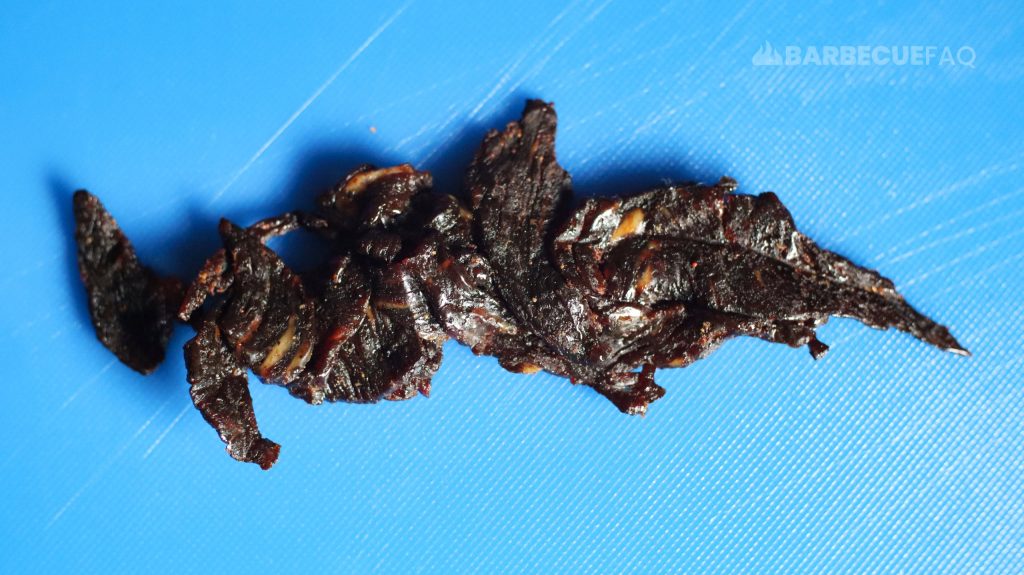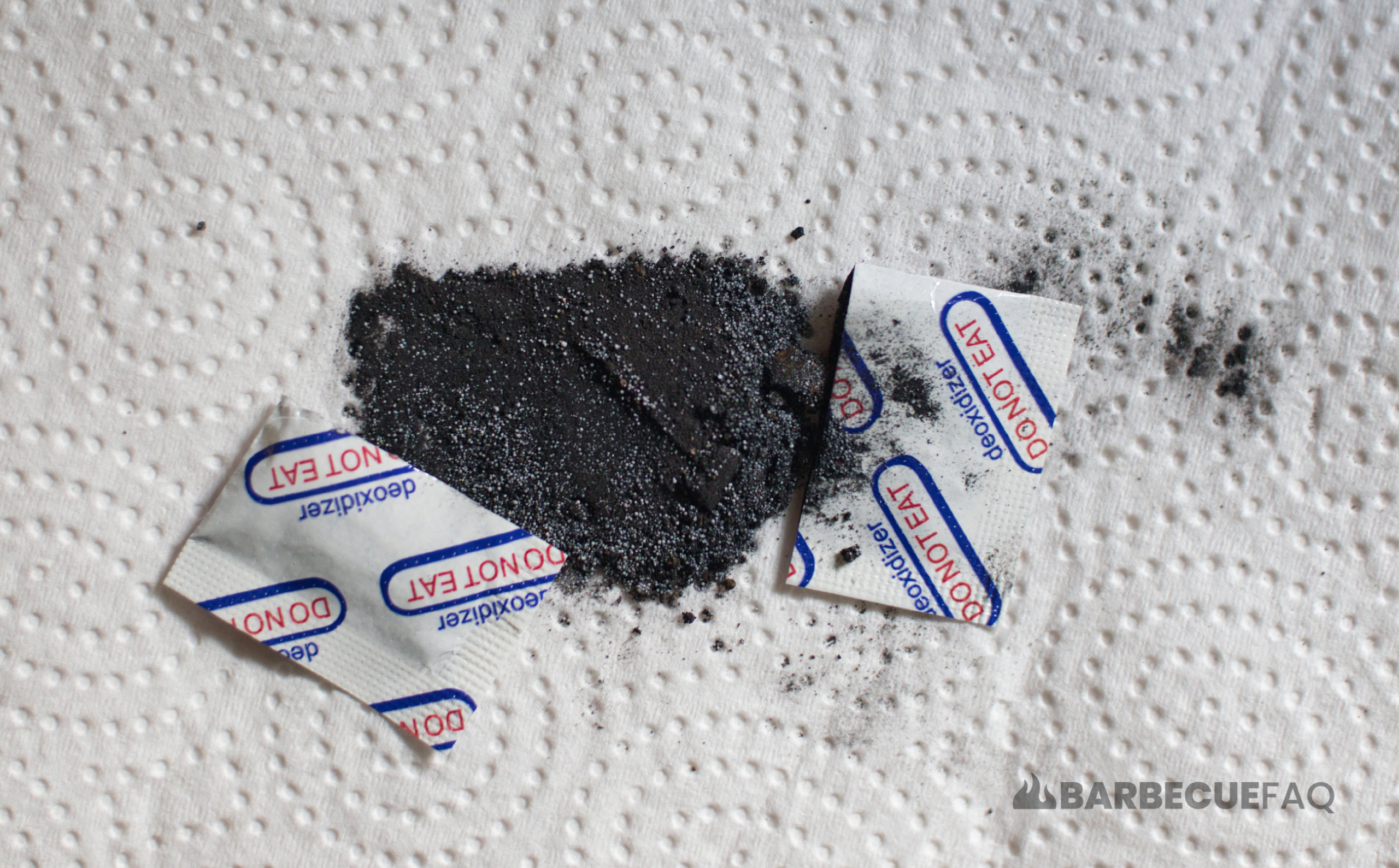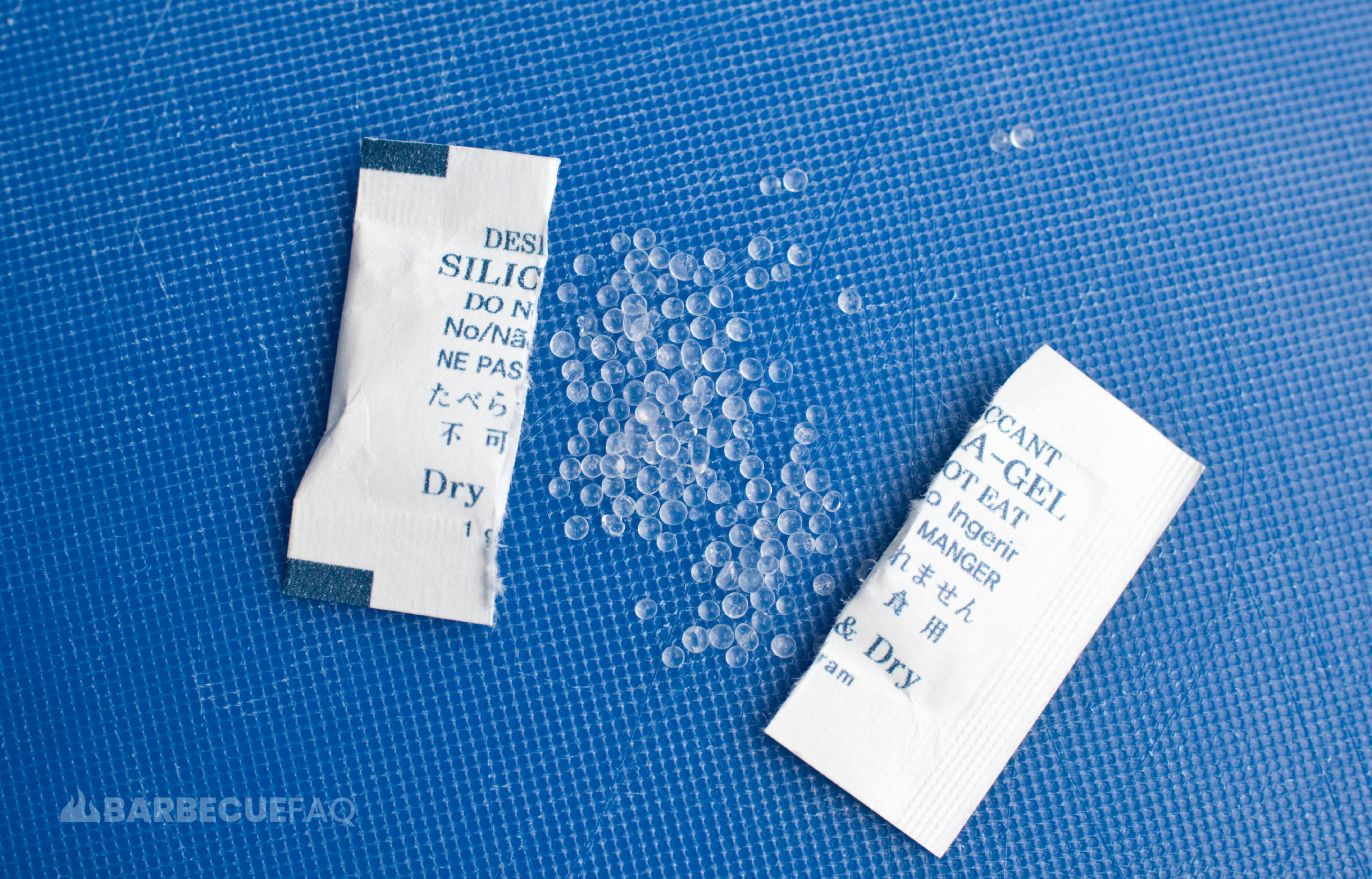Most beef jerky is packaged in what’s called a “barrier bag” and inside that bag is an oxygen absorber (the white packet).

These bags have unique benefits:
- They’re hermetically heat sealed and the seal is tear-able/removable. After tearing the seal, they feature a push close zipper.
- The packaging is a high barrier film (typically PET) that often features a display window so the consumer can see the product.
Within these pouches, they use Oxygen absorber packets to remove oxygen. The oxygen absorbers work to prevent the growth of obligate aerobes (organisms that require oxygen to grow).
The above factors help to maximize freshness, which is paramount with beef jerky.
Why Not Just Vacuum Seal the Jerky?
The above stands to reason, if the goal is to minimize oxygen interaction, why not just vacuum seal the jerky?
If you look around at how most beef jerky is packaged, you’ll notice that almost none of it is sold in a vacuum seal package.

While vacuum sealing removes oxygen from the package, it also negatively affects the exterior of the meat.
After breaking the vacuum seal, most people would likely describe the surface as “wet” or even “waxy.” Which, in my opinion, is a major downside.
Here’s beef jerky that was vacuum sealed for only 7 days:

The meat is clumped together and the exterior is “wet/waxy.”
Here’s the jerky after separating the pieces:

This is in stark contrast to jerky that was sealed with no vacuum:

There’s also no way to reseal the package – which is bad from a consumer perspective.
Another downside is the beef jerky looks awful in the package; Consumers buy what looks good and vacuum sealed jerky looks bad.
A barrier bag that’s packaged with oxygen absorbers is shelf-stable for up to a year, displays their product effectively as the bag can stand-up or be hung, and the bag is resealable via the push close zipper.
The reason the package says to consume within a week after opening is because the meat is now in contact with oxygen since you broke the seal.
Oxygen absorbers are NOT re-usable once they’re saturated.
How Do Oxygen Absorbers Work?
Our atmosphere is primarily made up of Nitrogen (78%) and Oxygen (21%) – as well as small amounts of other gases.

When food-stuff like beef jerky is in the presence of oxygen, it can encourage microbial growth of Yeasts and Molds. This is because these microorganisms are obligate aerobes, meaning they require free oxygen for growth.
In order to prevent their growth, you need to minimize things like oxygen, light, heat, humidity, water activity, etc.
- Water activity is minimized via the dehydration process. The jerky is also heat treated to kill off harmful bacteria and is typically cured with salt or a curing salt.
- To help combat obligate aerobes you then need to store/package the jerky in a way that removes oxygen while maintaining the quality of the meat.
Inside the oxygen absorber is primarily iron powder as well as other components like sodium (functions as a catalyst) and activated carbon (absorbs gas/odor).

The packet (the exterior) is made of a permeable membrane that allows oxygen and moisture to enter while also preventing the packet from leaking the iron.
The chemical reaction that occurs is between Iron and Oxygen forming Iron Oxide (rust), it looks like this:
4Fe + 3O2 --> 2Fe2O3This process is known as “rusting.”
After the iron oxidizes it leaves behind nitrogen and approximately 0.01% oxygen within the package. Hence being considered an “oxygen absorber.”
What About Silica Gel Packets?
If you’re reading this article because you’ve ingested Silica Gel, while it’s non-toxic, it’s still best to call Poison Control (1-800-222-1222).
Commercial beef jerky is usually sold with an oxygen absorber and not silica gel packets. However, some companies do use desiccants.
Silica gel packets or “desiccant bags” contain a chemical called a desiccant. This substance absorbs water/moisture from the air which helps to maintain dryness in the container.

Typically the packet will contain either silica gel or bentonite clay.
These are ideal for storage where-in you’re likely to go in and out of the bag.
Although Silica Gel is nontoxic, you shouldn’t eat it (as per the packaging “DO NOT EAT”). The small beads can pose a choking hazard to small children and due to being able to absorb moisture you may even experience dehydration/irritation in the throat.
Lots of articles will cite beads that were treated with cobalt chloride, which is toxic when ingested. However, these aren’t used for jerky packaging as they’re not food safe.




